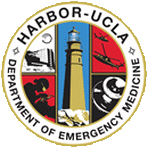heat for the area. Working in his protective gear, he began to feel dizzy and his heart race at which point he remembered that he had not taken the requisite water breaks, nor had he needed to urinate all day. His vision became “dark” momentarily, and his chief found him sitting near the truck, head between his knees.
On arrival to the ED, T 102.7 °F (39.3 °C) HR 128 BP 110/70 RR 24 SpO2 98% RA
You find an otherwise fit young man who is able to recount all events; his mucous
membranes are dry; heart is tachycardic; lungs are clear; skin is flushed and
clammy; there are no signs of burn or other trauma. Currently he mostly complains of headache, weakness, and total body aching.
You start with intravenous fluids, and are deciding where your patient is in the
spectrum of heat-related illness (HRI). Regarding HRI, which of the following is
TRUE?
A. Presence of sweating indicates an earlier and less severe presentation of HRI
B. Euvolemia is preventative against HRI
C. A normal mental status on presentation excludes severe illness
D. Cooling should continue even with shivering
In the meantime, a quote –
“Doctors most commonly get mixed up between absence of evidence and evidence of absence”
― Nassim Nicholas Taleb (b. 1960), Lebanese-American essayist and statistician


 RSS Feed
RSS Feed